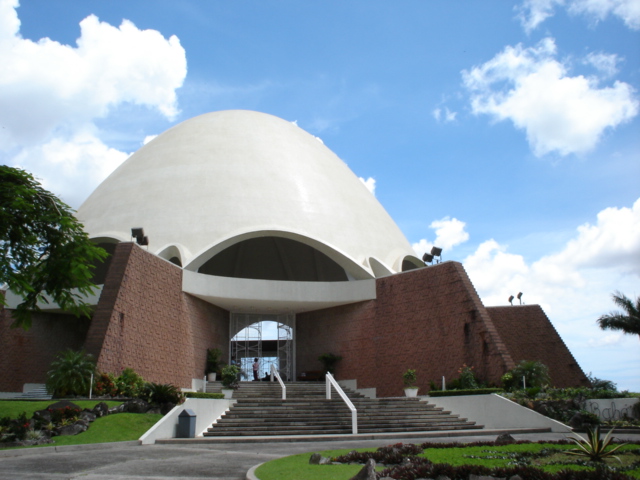
Although Panama has no official religion and the government does not collect statistics on religious affiliation, approximately 75 to 85 percent of Panamanians are Roman Catholic. Protestantism became more prevalent in the 20th century, especially among the African population and Indian groups, and now approximately 15 to 25 percent of the population identify themselves as Evangelical Christians, and the number is rapidly growing. A small percentage of people identify themselves as Episcopalians (7,000 to 10,000 members), Seventh-day Adventists, members of The Church of Jesus Christ of Latter-day Saints, Jehovah’s Witnesses, and other Christian groups. The Jewish population has three synagogues and about 10,000 members. There are also about 10,000 members each who are Hindus, Buddhists, Rastafarians, and Baha’is. There are a variety of indigenous religions, and some Panamanians practice the religion Santeria, which is a mixture of traditional West African beliefs and customs with Roman Catholic Traditions.
Panama was a Spanish colony from 1538 to 1821. After 1821 it was associated with Colombia until it received its independence. In 1903, the United States invasion helped overthrow the Columbian military dictatorship, after which major disagreements arose concerning the rights of the United States under the Panama treaty and Panama’s Constitution. Extensive legislation was drafted in 1917, creating codes for civil, commercial, criminal, and procedural law that were influenced by the codes of other countries. Although the codes have since been greatly revised and amended, they nonetheless retain the general structure created in 1917.The government is now a constitutional democracy with a President, unicameral legislative assembly, and a Supreme Court. Although the administration of justice is controlled by the judicial code, jurisprudence (legal precedent) does not have as persuasive a nature as it does in the courts of other Latin American legal systems. Court reports for specific cases are only available in the official gazette.
Since the first adoption of a constitution in 1904, Panama has gone through several constitutions, the last of which was adopted in 1972. Since that time, however, there have been many significant amendments, including the amendments in 1983 that strengthened the guarantee of civil liberty and restricted official support for candidates’ election to political office. The most recent amendments took place in 2004, and the amended Constitution has 328 articles. Power to govern is given by the people through the three branches of the government (Executive, Legislative, and Judicial), each branch being “limited and separate,” but working together in collaboration. Amendments to the Constitution may be made in the manner indicated in Article 31316 of the Constitution. The processes by which an amendment is passed can vary slightly, depending on whether changes are made to the proposed amendments or not. However, in both cases, there must be at least three debates in the legislature and it must be approved by an absolute majority of the members of the legislature in order to pass.18 Those in political power have respected the spirit and letter of the Constitution in varying degrees, at times using clauses like the state of emergency provisions for purely political purposes, such that the government has often struggled to instill public confidence in the rule of law established by the Constitution.